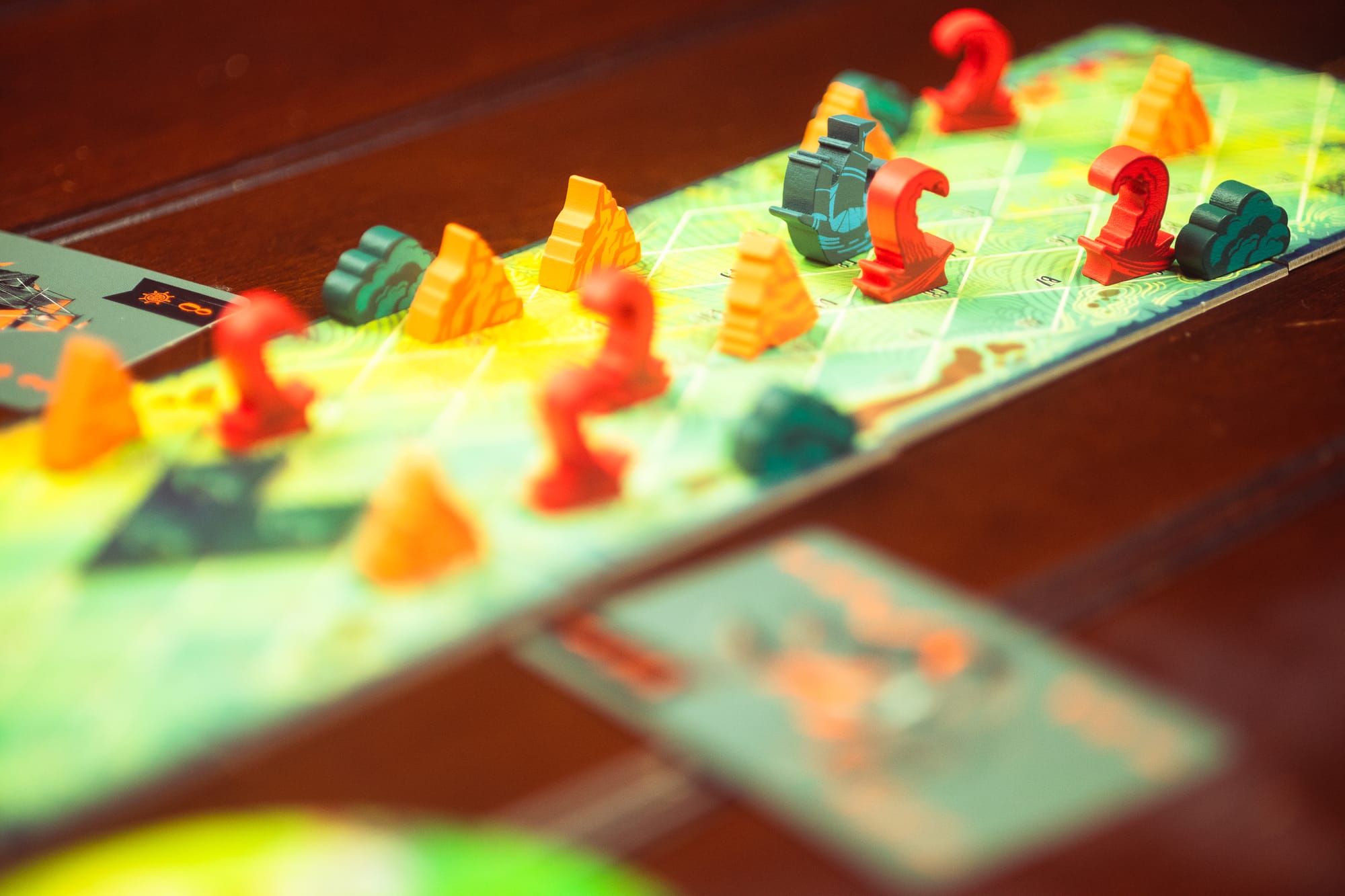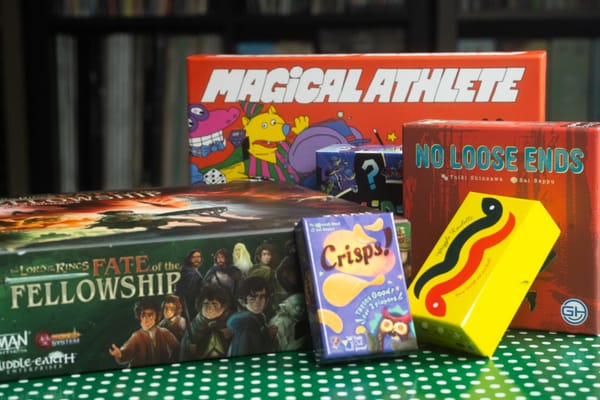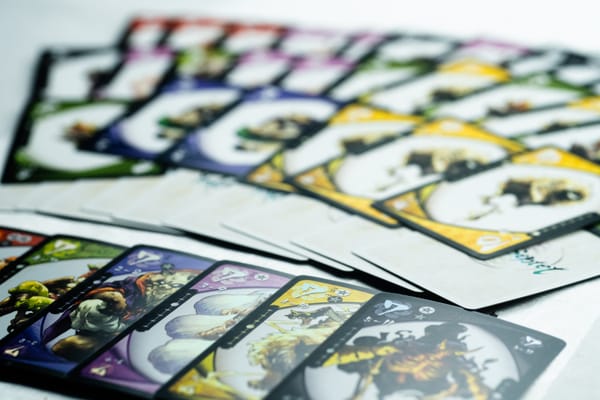My five favorite cooperative games
Plus more than 18 honorable mentions, because I can't not.
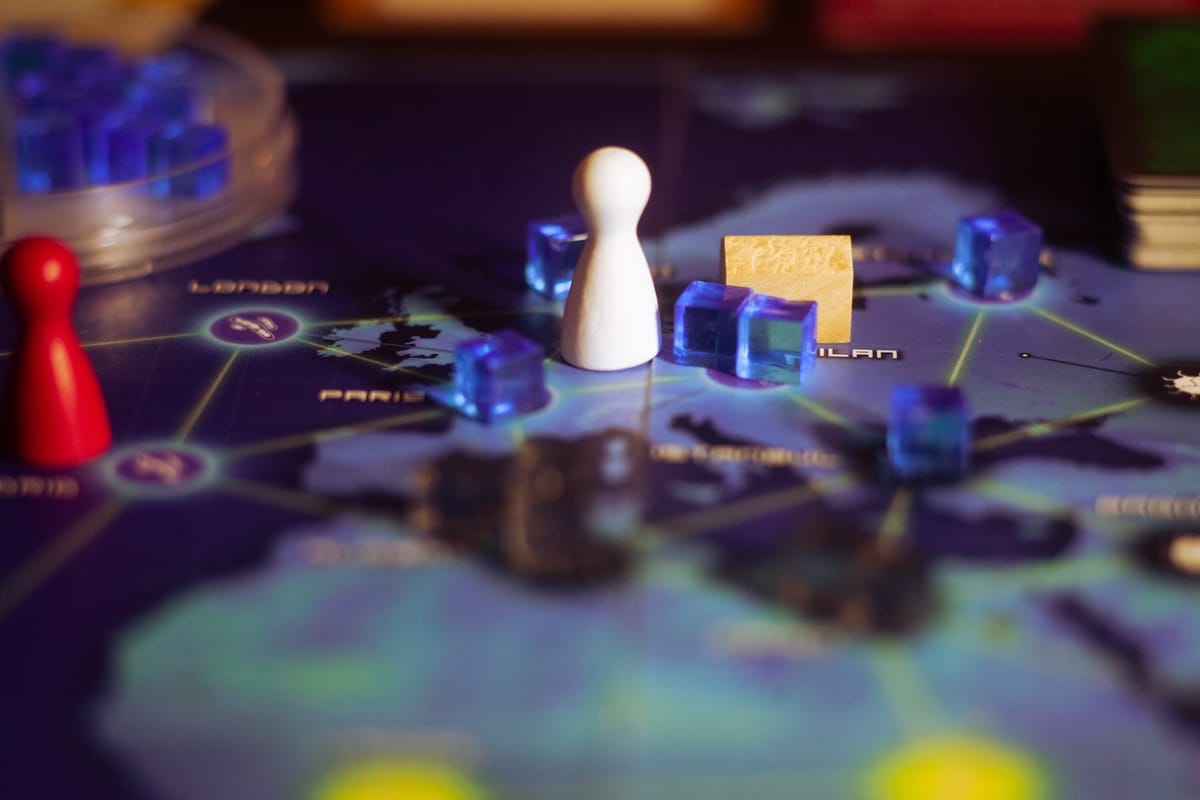
There’s something about cooperative games. I’m not a deeply competitive person most of the time, but I love playing games. That’s not dissimilar from what I discussed last week about suboptimal play: I don’t always prioritize defeating my opponents, but I do hope I’m not breaking the magic circle in so doing. (A hat tip to the comments and replies from last week’s newsletter; the conversation it prompted was good fun.) When I play a cooperative game, that priority shifts: I’m always playing to win, because my teammates are depending on me. I don’t mind losing, still, but if we’re all in agreement, I’m happy to shift the rules slightly to achieve victory, if under slightly dubious conditions.
This week, I’m bringing to you my five favorite cooperative games. You’re not going to find Gloomhaven (2017) or Frosthaven (2022); you won’t find Nemesis (2018) or Kingdom Death: Monster (2015). See, I haven’t played those games, and this isn’t a list of the five best-regarded cooperative games on Board Game Geek — this, I hope, gives you a sense of my preferences and the games I love. Along the way, I hope I can help you explore games you might love, too.



Iberia, Rising Tide and Pandemic: Three great entries in the Pandemic series | Photos by Matt Montgomery
Pandemic (2008)
This might be cheating somewhat, but it also makes this list a little harder to write: I’m counting basically every Pandemic game here. We’re coming eerily close to the 20th anniversary of this foundational cooperative game, which makes me a little uncomfortable. I still remember my first plays of Pandemic (Leacock, 2008). It must have been 2012 or 2013 (I first played that 2012 edition, with the box the game still uses), and I was just so excited to play a cooperative game. Solving the challenge together was exciting. The game’s not without its flaws, and if you’re somebody who cares deeply about quarterbacking in cooperative games, it’s not really the best option for you. I’m not somebody who is as concerned about that, but I think it’s at least worth talking through all the same.
https://www.donteatthemeeples.com/mitigating-quarterbacking-cooperative-games/
I’ve played a slew of cooperative games since I first opened up Pandemic, and we’ll talk about some of those here. While nothing can capture a feeling like one’s memories can, these games have opened me up to new experiences in gaming; they’ve introduced quandaries for players to solve that I hadn’t considered. Even with all that, I still revisit Pandemic at least reasonably often. The puzzle is still fun, even if it’s become easier with repetition. It still requires thought and planning, and I’m still more than capable of losing.
This Pandemic entry represents Iberia (Castro and Leacock, 2016) and Rising Tide (Doumen and Leacock, 2017), both of which take the series in interesting directions and laid the framework for later entries. It also represents the Pandemic Legacy (Daviau and Leacock, 2015–2020) series, with the first entry being one of the most exciting gaming experiences I’ve had. I’m a little tempted to include The Lord of the Rings: Fate of the Fellowship (Leacock, 2025), but you’ll have seen it in the honorable mentions, too.
So, Pandemic. It’s a game that’s here for its influence, but it’s here for its play, too. It’s here because in considering the whole of the series, there are plenty of games that would definitely make my top 20 and perhaps my top 10, and I suspect it would crowd out other interesting options in my top five. I love Pandemic.
Designed by Matt Leacock, illustrated in the 2012-and-forward editions by Chris Quilliams, and published by Z-Man Games.
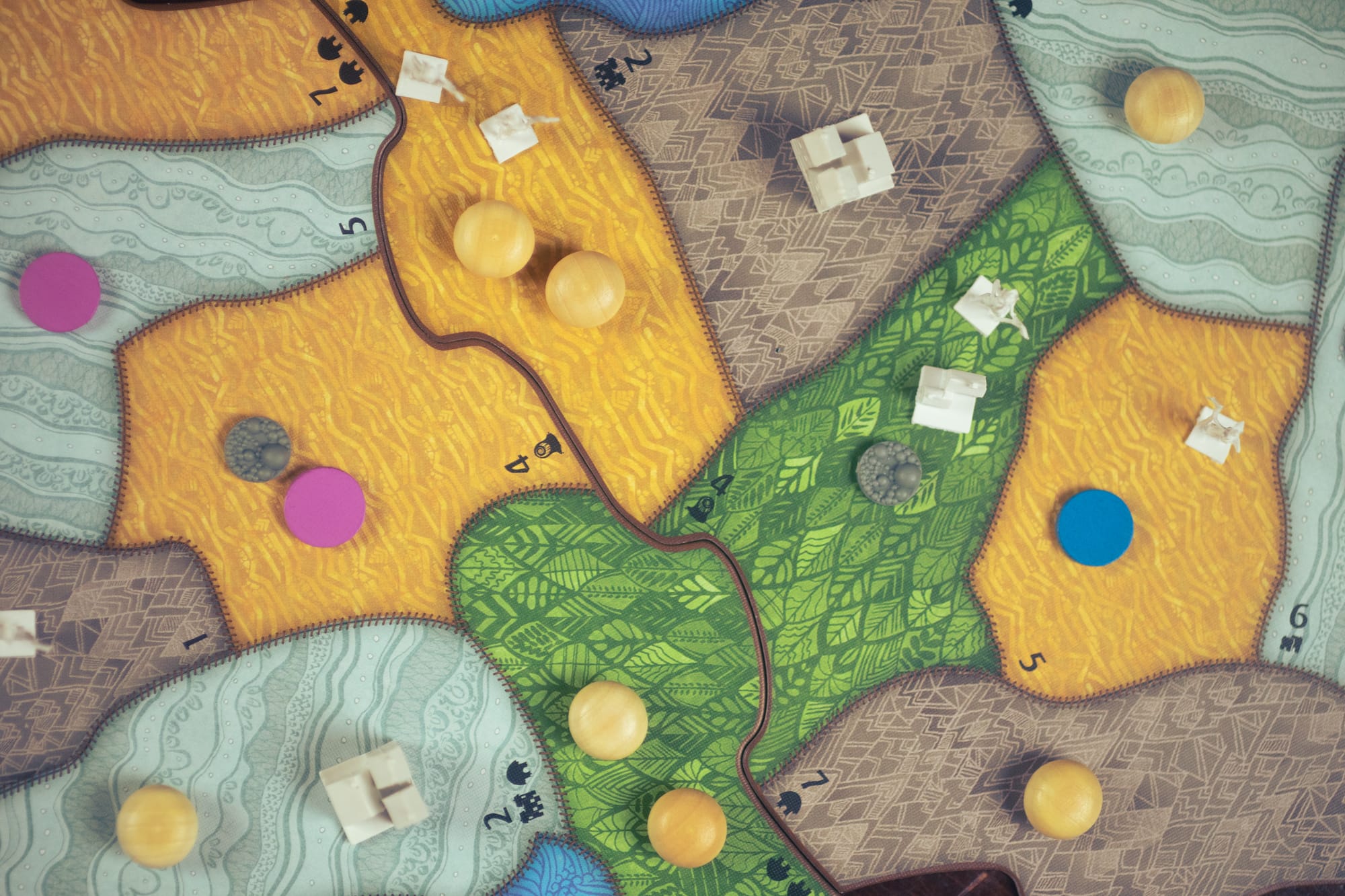
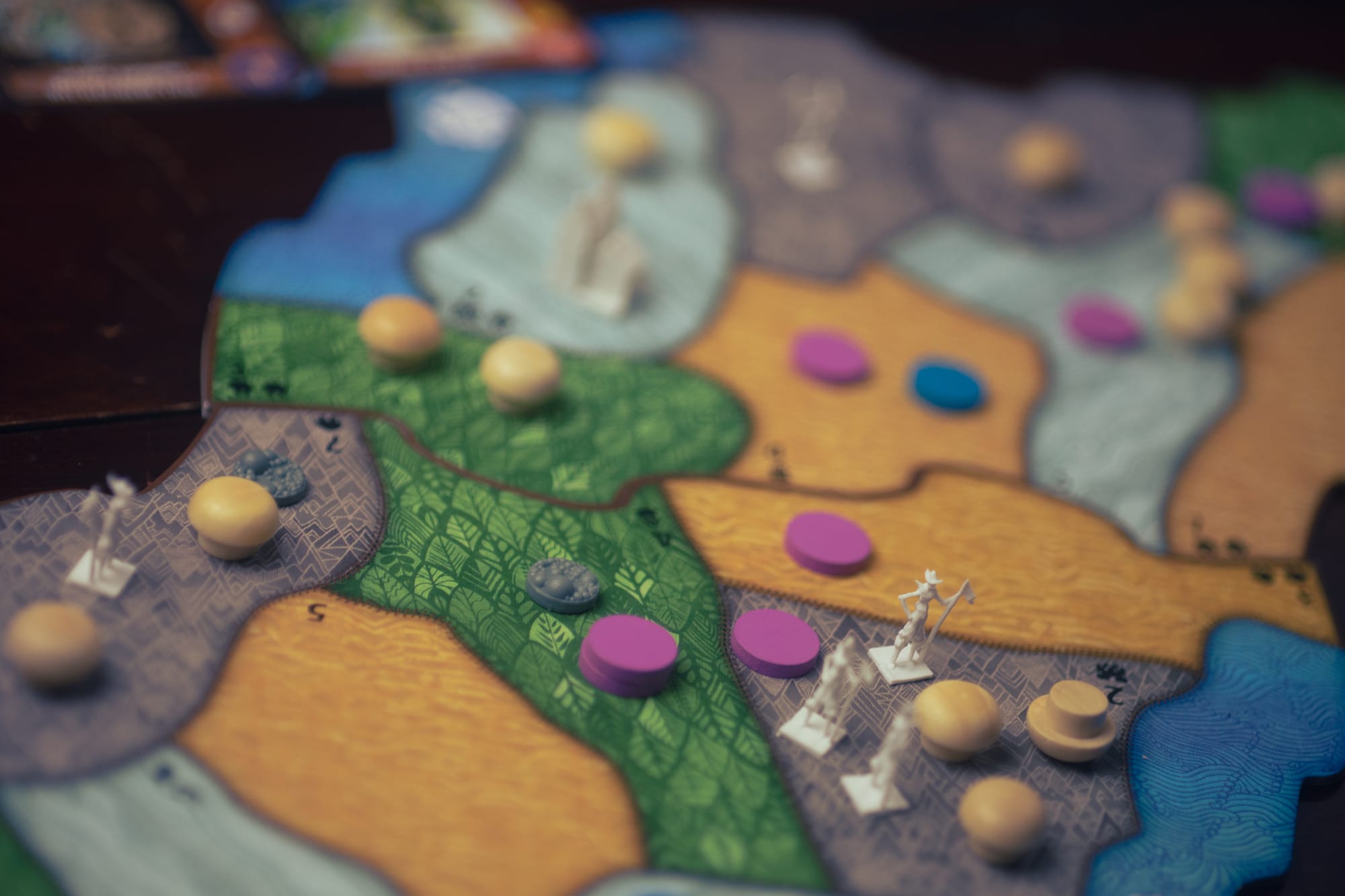
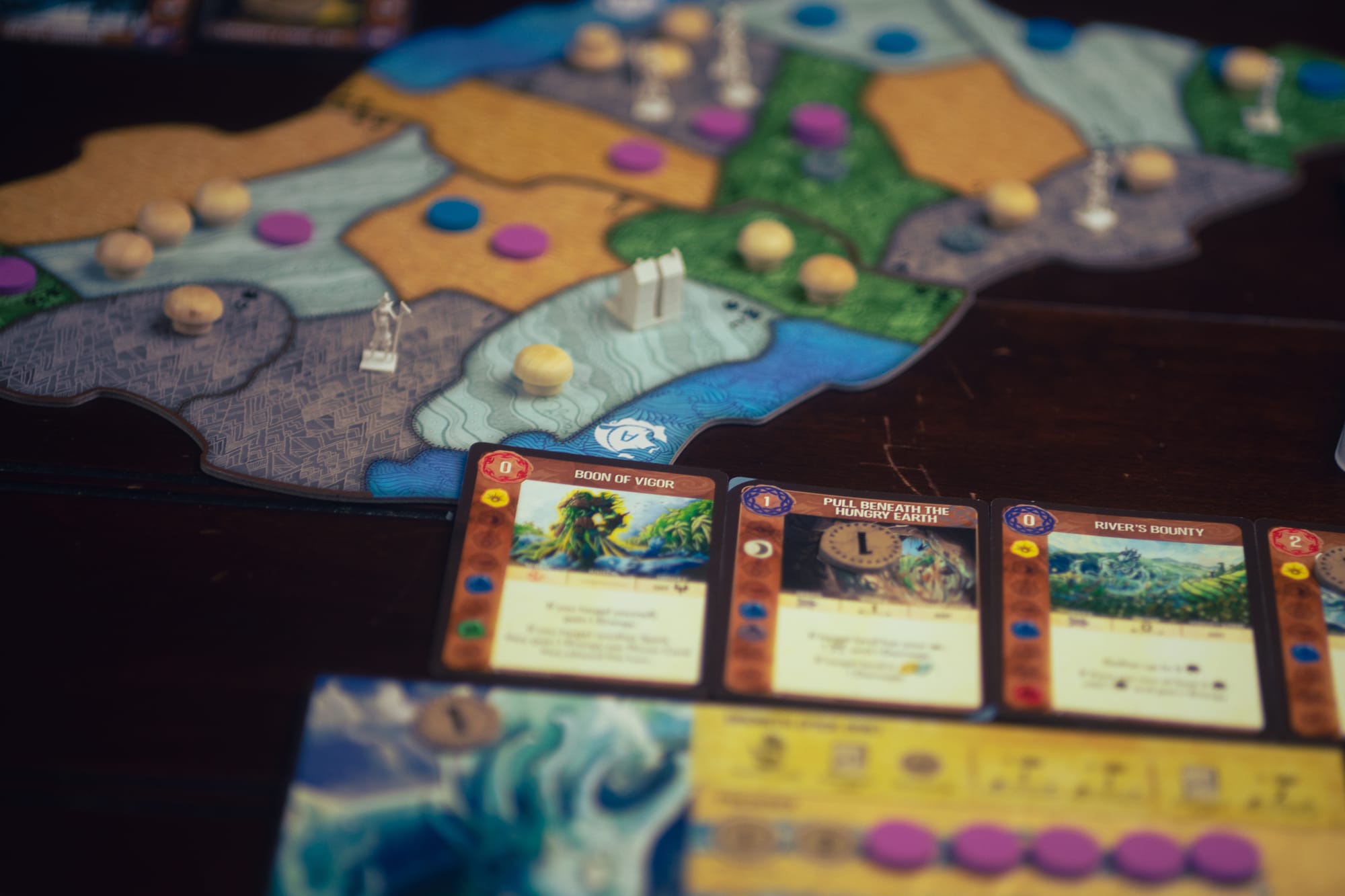
Spirit Island | Photos by Matt Montgomery
Spirit Island (2017)
Spirit Island (Reuss, 2017) is a cooperative game for players looking for something more involved. Each player is working toward the same goal: Drive colonists away from an island with a unique set of powers and abilities, as well as an evolving deck from which you’ll draw your powers. How you balance your actions is paramount: Will you be able to improve your abilities while driving away invaders, or will you fall to a growing force?
That balance is where Spirit Island hits its high notes. You’re pushing with your fellow players to repel the force, but without improvements to your powers, you won’t be able to stave off that force later in the game as reinforcements come more rapidly. Improving your powers becomes necessary, and it feels rewarding, and not simply because you are able to fend off stronger forces. As you grow, you’ll gain more interesting abilities, and your power cards will play off each other in more interesting ways. The game rewards players for their progress.
Spirit Island has a slew of expansions, each of which adds something interesting to the mix. They’re not strictly necessary, especially if you’ve never played the game before — but if you’ve played and you’re looking for something more, they’ll give you that for which you’re looking.
Designed by R. Eric Reuss, illustrated by a stable of artists, and published by Greater Than Games.


Sky Team | Photos by Matt Montgomery
Sky Team (2023)
Two-player cooperative games are somewhat unusual. Sure, plenty of cooperative games play just fine at two players, but few are aimed directly at that player count. Sky Team (Rémond, 2023) not only aims directly at two players, but it’s thematically geared for exactly that player count. This is a game where one player is a pilot and the other is a copilot on a reasonably large airplane. There’s no communication allowed during a round, but coordination between rounds is encouraged — unfortunately, your actions are performed with dice that are rolled after your opportunity to communicate ends. (If you’ve seen the second season of Nathan Fielder’s great The Rehearsal, you’ll understand that lack of communication is an unfortunate standard.)
I’ve described Sky Team as a great modular board game, and while I’ll stand by that, I think that misses out on describing how the core gameplay loop puts players in a position where they have to exercise a significant degree of trust in their teammate. No matter which scenario you’re playing, that’s where you’ll end up. Even with the expansion, Sky Team remains that same game at heart.
Designed by Luc Rémond, illustrated by Eric Hibbeler and Adrien Rives, and published by Scorpion Masqué.


The Crew: The Quest for Planet Nine (2019)
Few games have made as significant waves for a genre as The Crew: The Quest for Planet Nine (Sing, 2019), which helped fuel trick-taking interest after its release. The premise was simple: It’s a must-follow trick-taking game, but it’s cooperative, and you’re playing through missions. The trick-taking play in the game isn’t particularly novel or unusual, but it being cooperative is. Only Bremen (Ando, 2016), a cooperative trick-taking game played with animal meeples and visible suits, can reasonably be said to have predated The Crew. In the time since, that list has grown: Sail (2023), The Fellowship of the Ring: Trick-Taking Game (2025), Fox in the Forest Duet (2020), and The Kakapo: Buddy & Party (2023) — most of which appear in my honorable mentions here — are all successful, cooperative entries into the trick-taking canon.
It’s not just that it’s cooperative, though. The Crew functions quite well because of how well-crafted its missions are. Ultimately, that’s where the game hits its stride. After the first 10 or so missions, the game starts its difficulty ascent, and you will find yourself failing more and more often. It’ll seem like a slightly impossible task at times, those missions. But as you go through the game, you’ll discover that your trick-taking abilities have improved with your team, and you’ll find easier missions almost too easy. It’s a really graceful game that way.
The game’s sequel, The Crew: Mission Deep Sea (Sing, 2021), is sometimes described as more complex take on its predecessor, and I do really enjoy the game. I’d probably opt to play it most times over the first one these days. That’s because the missions are essentially randomly generated each time you play, and you’re likely to see a new combination. The Quest for Planet Nine makes the top five, though, because it guides players through the game; it grows with players as they understand the tendencies of their teammates.
Designed by Thomas Sing, illustrated by Marco Armbruster and Sensit Communication GmbH, and published by KOSMOS.

EXIT: The Game (2016–present)
When escape rooms emerged on the scene, I was excited to step into one and solve its mysteries. It seemed like the ultimate gaming experience: immersive, difficult and enthralling in a way other games simply couldn’t be. That timer ticking down as you played seemed like a great way to put some external pressure on players.
I still love escape rooms, but the EXIT (Inka and Markus Brand, 2016–present) series has felt significantly more accessible to my interests. Instead of having to gather a reasonably large group or pay a hefty price tag for a small-group experience, like one does with escape rooms, these games cap out at a normal small-box board game price. The puzzles are generally reliable, and there’s always a variety of puzzle styles contained within. They’re geared toward smaller-group experiences, with a four-person group being about as big as you’d want to go. I’m not going to say the EXIT games “solve for” escape rooms or anything like that. There’s a uniqueness about a good escape room, the way it fully immerses you into the puzzle-solving. The feeling of joy when you do escape is your reward for an hour well-spent.
The EXIT series — and take your pick on the game you choose, because most of them are very good (I’ve had just one slightly negative experience, and that’s with the Lord of the Rings-themed iteration of the game.) — is in the same family as an escape room, no doubt, but it’s an experience you don’t have to plan a weekend around. Moreover, it’s a series that’s well-crafted, with a wide variety of puzzles for your group to solve.
https://www.donteatthemeeples.com/exit-unlock-deckscape-escape-room-board-games/
The EXIT: The Game series is designed by Inka and Markus Brand, illustrated by a range of artists, and published by KOSMOS.
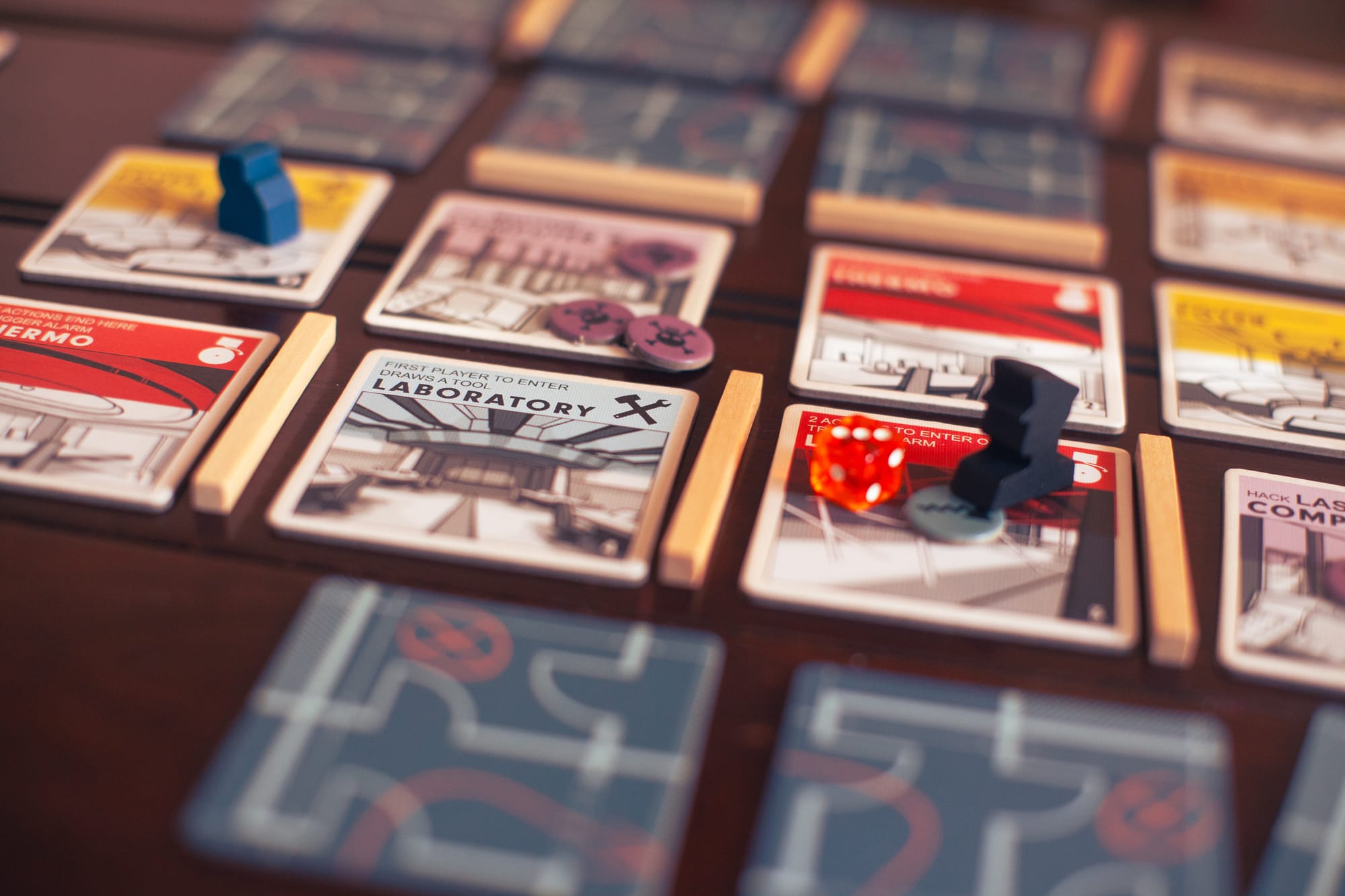
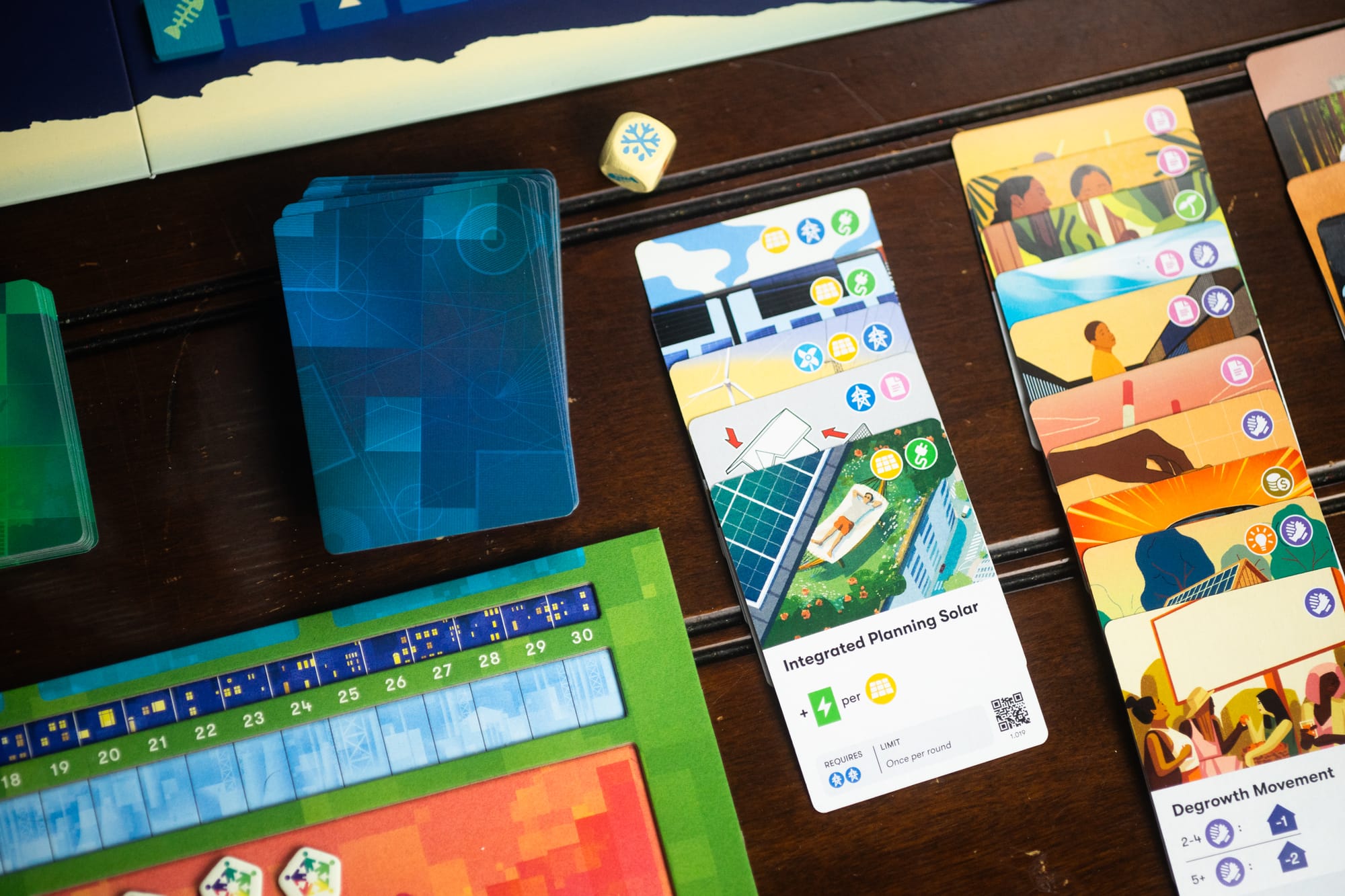
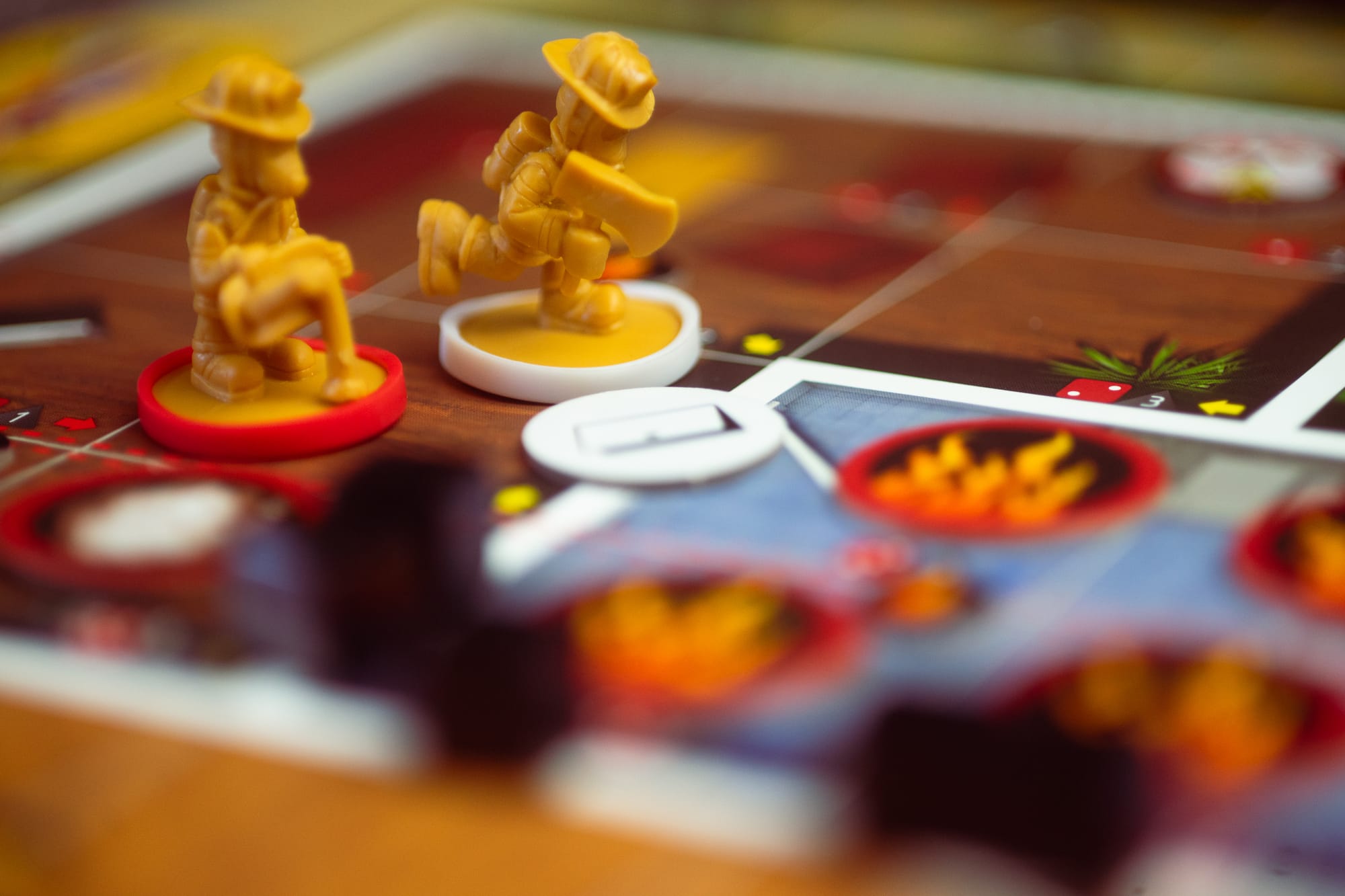

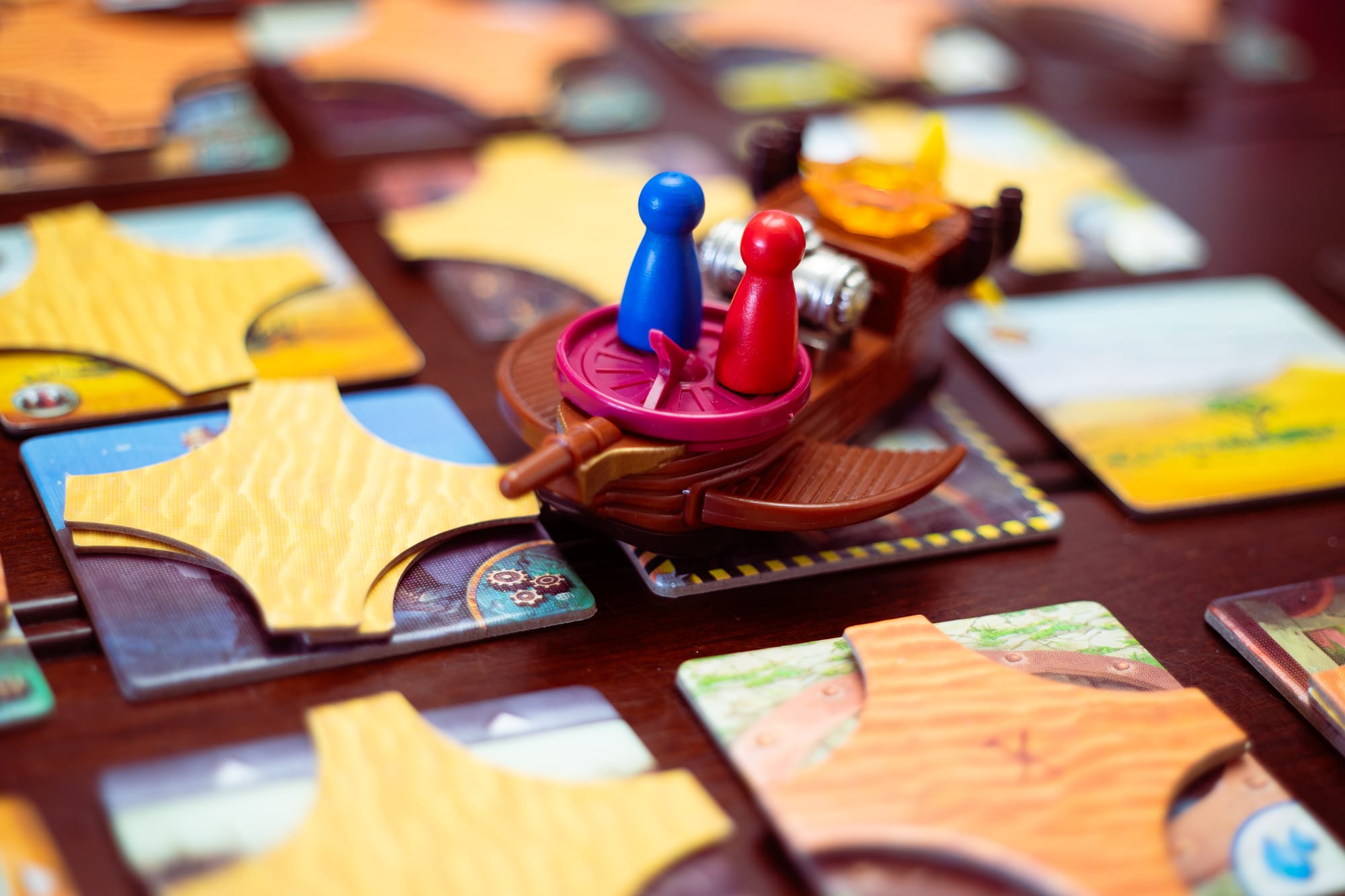

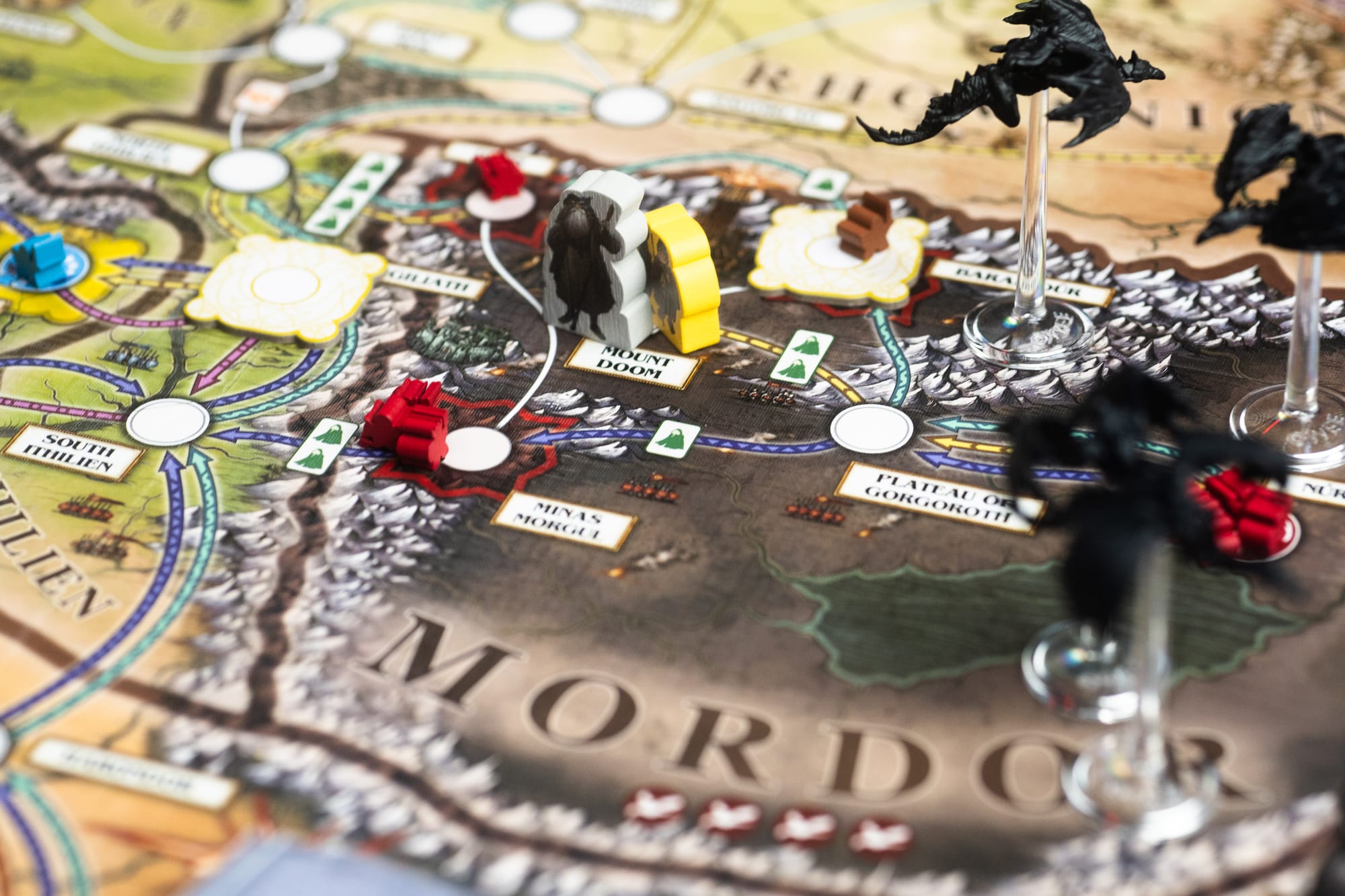


Burgle Bros, Daybreak, Flash Point: Fire Rescue, For Science!, Forbidden Desert, The Gang, The Lord of the Rings: Fate of the Fellowship, MicroMacro and Wilmot's Warehouse | Photos by Matt Montgomery
Honorable mentions
- Burgle Bros (Fowers, 2015) takes players through a heist, with each player having a special power. Its first sequel, Burgle Bros 2: The Casino Capers (Fowers and Krause, 2023) is a nice follow-up, and the third, Burgle Bros 3: Future Flip (Fowers and Larsen, 2025), ought to be arriving to backers at some point, too. This is a beautiful game, and
- Daybreak (Leacock and Menapace, 2023) shapes environmental advocacy into one of those games where you end up with increasingly more powerful actions as you progress.
- Dorfromantik (Palm and Zach, 2022) is a board game take on the casual video game, but there’s something about being a board game that makes something breezy quite a bit more strategic.
- The Fellowship of the Ring: Trick-Taking Game (Bornmueller, 2025) — I’m a bit obsessed with trick-taking, and this game is incredible, but I need to finish the game before I feel good about including it in my top five, if it ends up there at all. (It’s extremely good, though.)
- Flash Point: Fire Rescue (Lanzing, 2011) pits players against flames, the natural enemy of board games. It’s not highly strategic (it’s more tactical, though it’s not a “tactical game” as that has a different meaning), and it’s a bit chaotic. It holds up. (I still need to play the legacy sequel, too.)
- For Science! (Reuss, 2021) is a real-time cooperative dexterity game. You’re basically sequencing cures for viruses using wooden blocks.
- Matt Leacock’s Forbidden Island (2010), Forbidden Desert (2013), Forbidden Sky (2018) and Forbidden Jungle (2023) comprise the Forbidden series, and they grow in complexity from the earliest to the latest. The first is a great introduction to cooperative games; the most recent is still lighter than even Pandemic might generally be considered, but it’s still a good step up from its predecessors.
- The Gang (Cooper and Heath, 2024) is cooperative poker. That’s the pitch. It misses out on the top five, but not by much.
- The Kakapo: Buddy & Party (2023)
- The Lord of the Rings: Fate of the Fellowship (Leacock, 2025) — I’ve really been enjoying this game this year, but I do think I’ve got to get some more in-person play in before it can come close to my top five.
- MicroMacro (Sich, 2020–present) is basically Where’s Waldo (or Where’s Wally, if you’d rather) but with a bit of a mystery game wrapped around it. It’s neat!
- Mysterium (Nevskiy and Sidorenko, 2015) is best described as cooperative Dixit (Roubira, 2008), where one player is communicating the solution to a mystery with surrealist art.
- Now Boarding (Fowers, 2018) is the rare cooperative real-time game I can get behind, and that’s because it’s essentially an optimization puzzle played in sequential real-time segments.
- Paint the Roses (Goldman, 2022) is a cooperative deduction game, and there just aren’t very many of those.
- Sail (Koryo and Yusei, 2023) takes cooperative trick-taking to the high seas,
- Sherlock Holmes Consulting Detective (Edwards, Goldberg and Grady, 1981) is one of the earliest true cooperative games. It holds up incredibly well, in part because it’s more interactive fiction than it is an attempt at a 1980s-style board game.
- Sprawlopolis (Aramini, Devine and Kluka, 2018) is an 18-card tile placement game where you’re building a little city.
- Wilmot’s Warehouse (Haggett, Hogg and King, 2024) has players telling stories in a game that’s sort of just … memory? It’s tangentially related to the video game of the same name.



